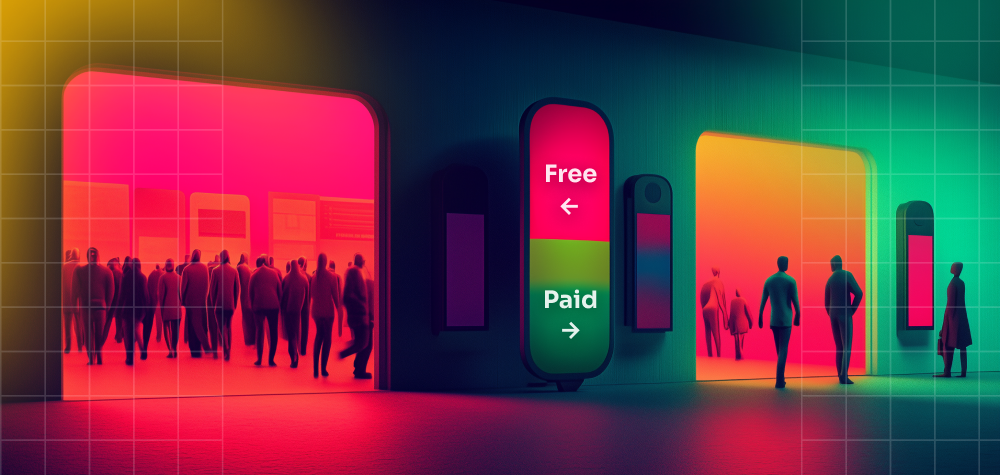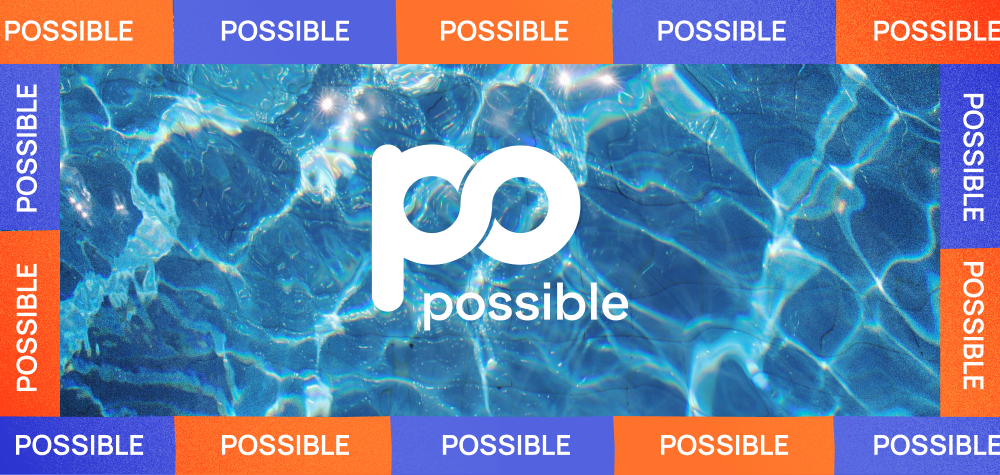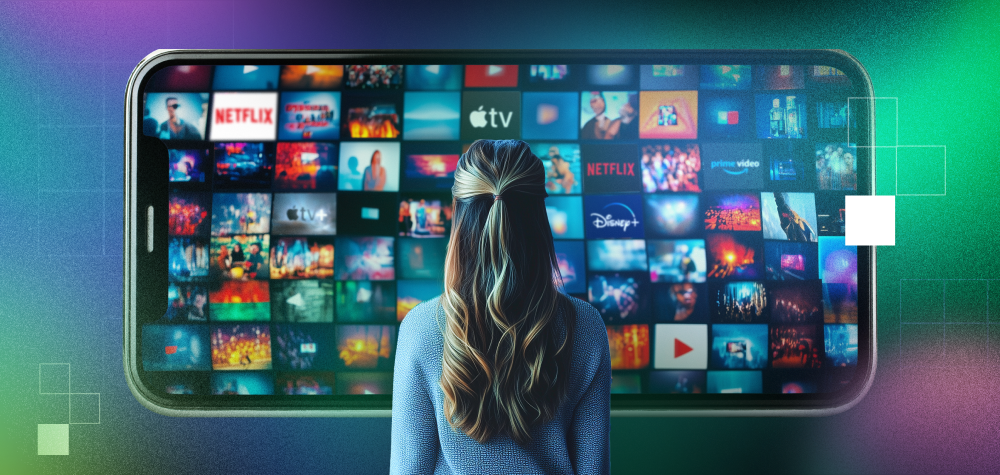Most people say they’re at least “somewhat” annoyed by digital ads, but concede that ads are the lesser of two evils—given the choice, they’d rather look at ads than pay for the content they consume online.
That’s the takeaway from two recent, unrelated surveys, from the IAB and the advertising privacy startup Eyeo.
These findings aren’t surprising, but they do illuminate the industry’s continued challenges around digital ads. People want to see relevant ads, and advertisers want to reach engaged consumers. Start.io is a sell-side platform that helps brands, agencies, and DSPs navigate this complex journey of enabling relevant advertising experiences to consumers.
Let’s dive into the data.
First, the bad news—people find ads frustrating.
In a recent survey from Eyeo, between 70- and 80 percent of respondents said they felt at least “somewhat” frustrated when they encountered digital ads, noting that they were least frustrated with CTV ads, and most frustrated with mobile ads.
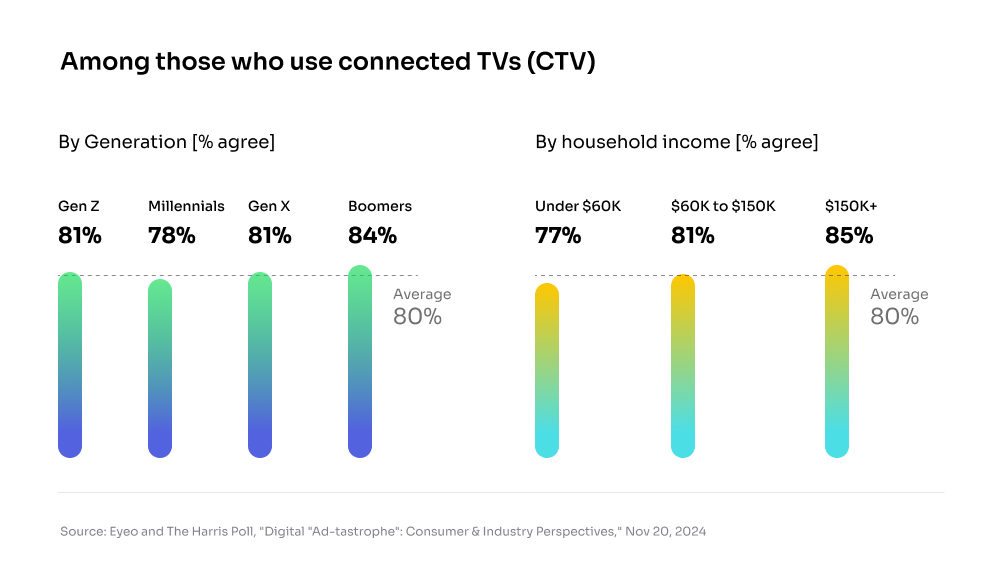
The good news?
The alternative—paying for access to ad-free content—is worse, according to a separate survey published this week from IAB. In a global survey of some 3,500 online consumers, 80 percent said they prefer seeing ads over having to pay for online services.
Roughly 70 percent of people surveyed by the IAB say they’re willing to share their data with trusted publishers, if that means getting targeted ads that are relevant to their interests.
“The way I see it, if there’s something I really want and advertisers show it to me, it could be a good thing,” one respondent told the IAB. “I could find a product that I might not have realized I wanted, but if they’re advertising to me and it’s not something that I care about, I won’t buy it.”
Consumer attitudes toward ads remain fairly consistent across age groups and income.
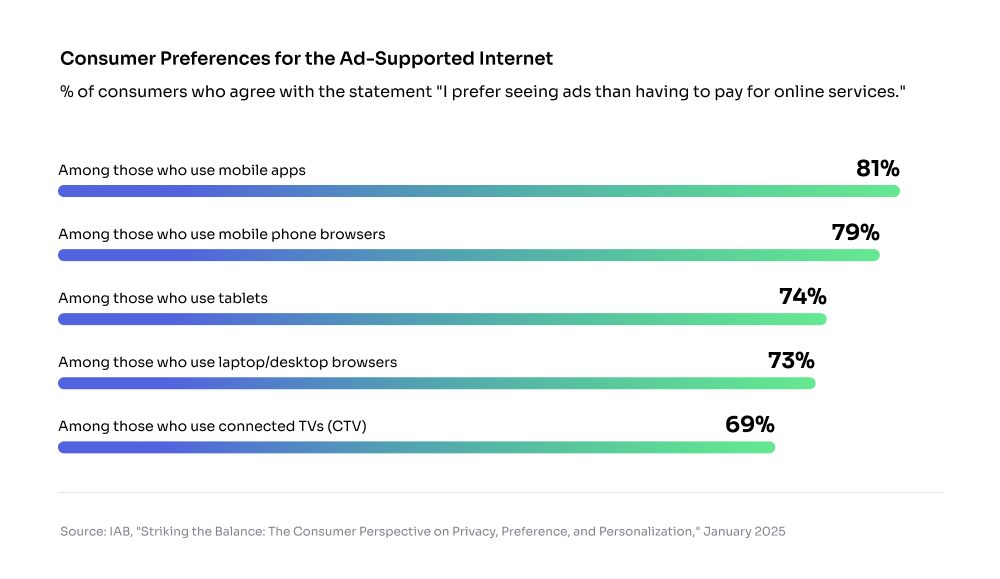
Asked whether they prefer to see online ads rather than paying for content, boomers are most enthusiastic about ads (84% prefer ads), while millennials are least enthusiastic (78% prefer ads).
It’s a similar narrow range when respondents are sorted by household income, with wealthier households (earning $150,000 or more per year) being more enthusiastic about ads (85% prefer ads), and poorer households (earning less than $60,000 per year) being less enthusiastic about ads (77% prefer ads).
The IAB asked people to name their top concern around data privacy, and the overwhelming majority—80 percent—said they worried that their data would fall into the hands of criminals, and they would be victims of fraud or theft. Just 2 percent of people said their top concern was their data being used for personalized advertising.
Advertisers and publishers can glean four key takeaways from these two surveys:
Mobile ads are frustrating. Americans are now spending 3 hours and 45 minutes per day on their mobile phones, and remain frustrated by the mobile ad experience. This can be due to the frequency of ads, the disruptive nature of larger mobile ad formats, and/or the perceived lack of personalization in mobile ads vs. desktop ads.
People are more frustrated by paywalls. Consumers dislike paywalls more than ads. Given the choice, consumers will pick ads over paid content, and would (ideally) pick personalized, relevant ads over generic ads. Paid content remains a non-starter for consumers in 2025, outside of a select few use cases, such as premium branded publishers and CTV subscriptions.
People understand the value of ads. Three decades into mass adoption of the internet, consumers are generally comfortable with the exchange of value: They want free content, and they’re willing to share their data and consume ads to get it. Consumers are pretty ad-savvy—the average click-through rate for display ads on the Google Display Network hovers at around 0.46 percent. Put another way, if you deliver 100,000 display ad impressions, you can expect just 460 people to click on that ad.
Targeted ads are king. With the digital exchange of value set, it’s on advertisers, publishers, and the advertising technology industry to improve the consumer experience by delivering better-targeted advertising. This will reduce ad frustration, improve clickthrough rates, and make it more likely for consumers to return to a publisher’s content. Start.io’s solution is at the core of this tradeoff, providing a tech stack that enables brands, agencies and DSPs to navigate the complexity of the ad-tech ecosystem, leveraging mobile signals to deliver a well targeted ad across platforms.
